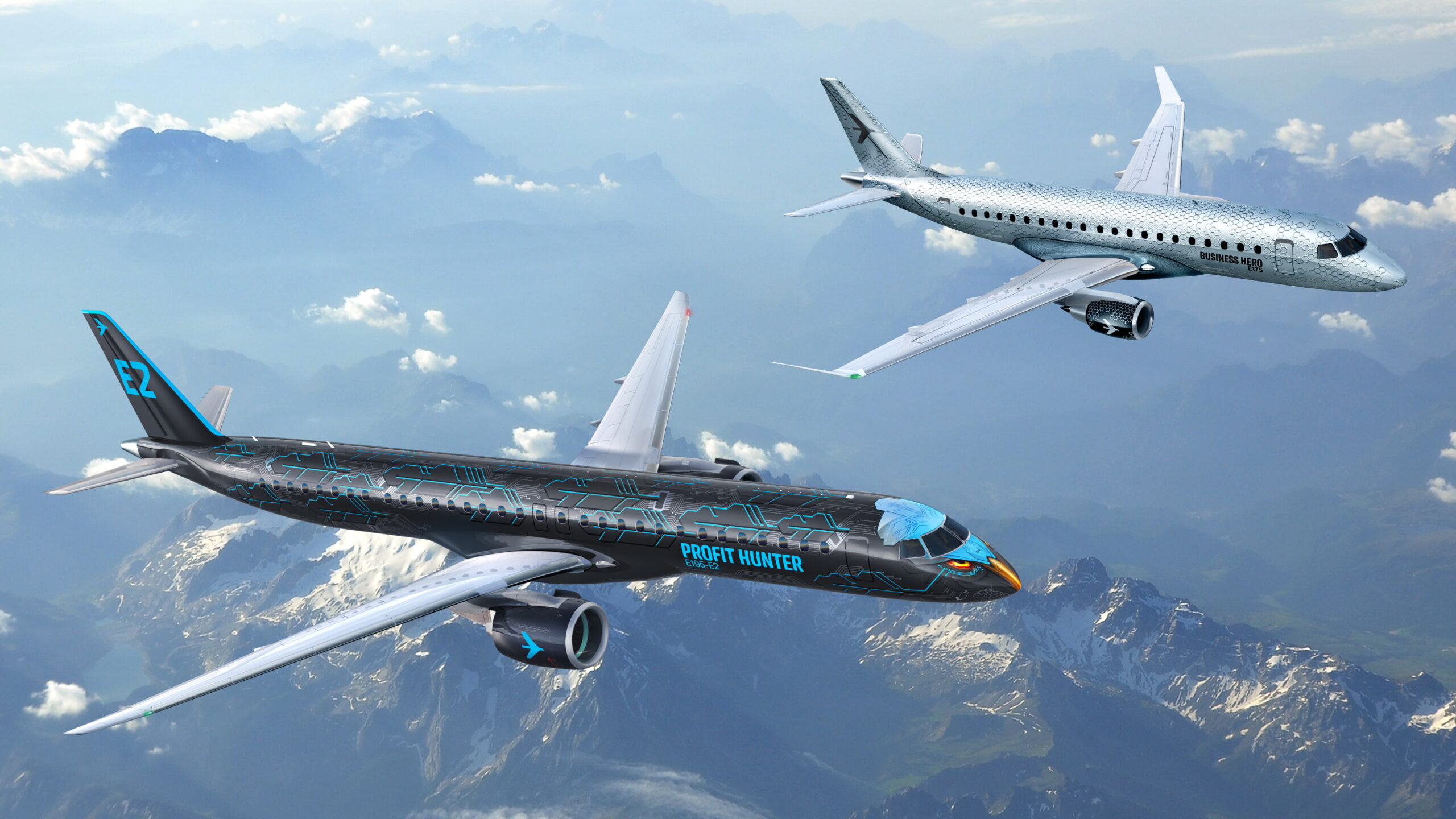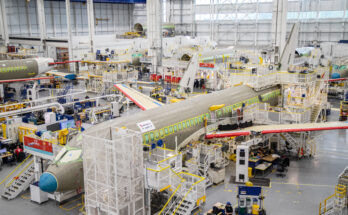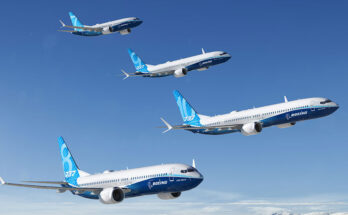
Embraer unveiled a number of upgrades and performance improvements for its E-Jets and E-Jets E2 series of commercial jetliners at the Farnborough International Airshow. The upgrades and improvements apply to the 76-88 passenger Embraer 175 as well as the 97-114 passenger E190-E2 and the 120-146 passenger E195-E2.
According to Embraer, the measures will improve operational effectiveness and deliver a net present value of $6.0 million per aircraft over 15 years in cost reduction and additional revenue.
The 175 is the remaining in-production member of the original E-Jets family. The improvements announced at Farnborough incorporate several features into the 175 that are already found on the next-generation E2 series. Available to customers on request, the upgrades include enhancements to the cabin and passenger experience, as well as an update to some of the 175’s avionics. They include larger overhead bins, mood cabin lighting, and new Recaro seats.
In addition, satellite connectivity will be available for the first time on the 175. Both Ku-band and Ka-band satellite connectivity are to be available for retrofit by 2026.
Other available improvements for the 175 include upgraded data transfer solutions and a new weather radar. The data transfer improvements will enable digital transformation and wireless retrieval of flight data, and are to be available by the fourth quarter of 2024. The new weather radar will provide turbulence detection and alert, predictive wind shear detection, and 3-D volumetric scanning, and is slated to be available by the second quarter of 2026.
The upgrades to the E190-E2 and E195-E2 include reduced fuel burn, improved range, and other enhancements. Fuel burn is reduced on both models by 2.5 percent. This is helped by an upgrade to the aircraft’s bleed management system. Embraer said that the improvement is worth $1.0 million per aircraft.
The range of the E195-E2 has been increased to 3,000 nautical miles, from the previous 2,600 nautical miles. Improvements to the E2 models’ Pratt & Whitney geared turbofan (GTF) engines will increase time on wing by 10 percent. This has been achieved by optimizing climb thrust, which demands less of the engine, thus reducing engine degradation and increasing time on wing. Embraer expects that the increased time on wing will save operators $0.5 million over 15 years.
Embraer also unveiled an Enhanced Take Off System for the E2 aircraft. The automatic takeoff system is intended to produce a more precise and efficient rotation moment and flight trajectory, reducing required field length and pilot workload and translating into increased payload and range from challenging airports.
In addition, cabin optimization on the E195-E2 has enabled the installation of an extra row of four seats to most seating configurations. Thus, an E195-E2 configured to seat 136 passengers will now be able to accommodate 140. Maximum seating for the E195-E2 remains at 146. Recaro seats will be available as an option. According to Embraer, one extra row of seats can generate additional revenue for airlines equivalent to $4.5 million per aircraft over a period of 15 years.
Raymond Jaworowski currently co-authors three of Forecast International's best-selling products: Civil Aircraft Forecast, Military Aircraft Forecast, and Rotorcraft Forecast. As a contributor to Aviation Week & Space Technology's Aerospace Source Book, he has authored Aircraft Outlooks, and provided input for the publication's Aircraft Specifications tables. Raymond has represented Forecast International at numerous conferences and trade shows, often as a featured speaker. He is a member of the American Helicopter Society.




